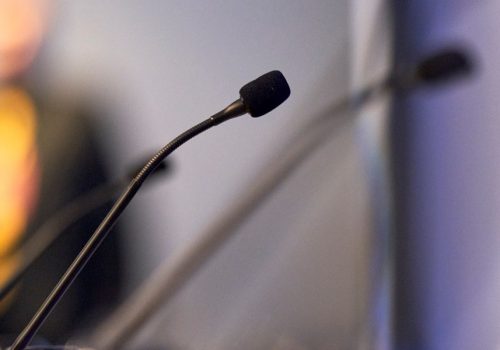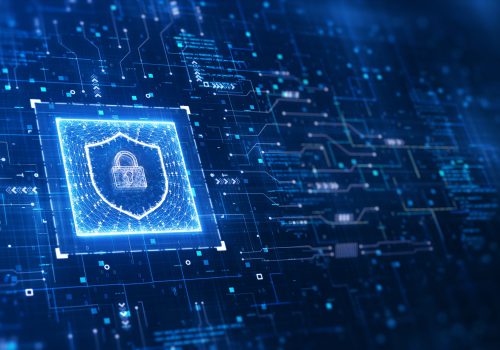In the quiet suburbs of small-town Canada, Hannah, an 80-year-old retiree, faced a daunting health challenge. Diagnosed with congestive heart failure, she grappled with frequent hospital visits, medication adjustments, and the constant fear of exacerbations. But then came a game-changer: remote patient monitoring (RPM).
In healthcare, effective diagnostics rely on thorough and consistent communication between medical staff and patients. Regular, accurate and timely information is crucial for managing health conditions, delivering treatments and monitoring patient progress. This is true for physicians everywhere: from busy hospital wards to self-run practices.
Beyond improving patient care, patient monitoring is garnering significant attention from policymakers too, presenting opportunities for better health outcomes at a fraction of the cost of traditional healthcare methods. The wealth of data collected from RPM can help guide policy decisions that address immediate health concerns while laying the groundwork for a more innovative and efficient healthcare system.
What is remote patient monitoring?
Remote patient monitoring, also known as remote health monitoring, enables health professionals to extend their care services beyond the confines of their clinic, practice or hospital. RPM uses a wide variety of digital tools and devices, such as wearable sensors, to monitor vital health data from patients from the comfort of their own homes and when they are going about their daily activities. This data is then securely transmitted to their doctor for analysis.
This steady flow of data provides unprecedented insight into a patient’s health, enabling swift medical decisions and interventions. For clinicians, nurses and other healthcare professionals, understanding how RPM devices work and their broader potential is essential. It isn’t just about embracing the latest technology; it’s about recognizing the transformative impact that remote health monitoring can have on patient care and outcomes.
How does remote patient monitoring work?
The basic process of RPM typically involves several key steps. For Hannah, the journey began when she was diagnosed with a chronic condition over 12 months ago. Her healthcare provider, whom she visits regularly, assessed her suitability for remote management and initiated an RPM programme. Meeting all the criteria for eligibility, Hannah promptly signed the consent form to enrol.
Hannah then received a remote patient monitoring kit that included a smartwatch and a heart rate monitor, the usual RPM devices for this sort of complaint. Now, whenever she feels short of breath or notices irregular heartbeats, she taps the watch. Within seconds, her heart rate data is transmitted to her cardiologist’s office. Based on the RPM data, Dr Fieldman then adjusts Hannah’s medication remotely, preventing fluid build-up in her lungs. Hanna feels empowered – she is an active participant in her care.
Remote patient monitoring is especially beneficial for chronic conditions, where subtle changes in health metrics can significantly impact a patient’s quality of life. For Hannah, it’s a godsend. With real-time data at their fingertips, her healthcare team can make timely adjustments to her treatment plan, enhancing her overall wellbeing and preventing complications.
What are the benefits of RPM?
For Hannah and other patients like her, monitoring their health status remotely offers significant benefits, including:
- Better care outcomes: Remote patient monitoring facilitates the early detection of health issues, enabling prompt intervention from healthcare providers.
- Greater control: RPM systems often include user-friendly apps for smartphones or tablets, giving patients immediate access to their health data. When equipped with the right tools and skills, patients are more likely to adhere to treatment plans and make informed health choices.
- Fewer in-person visits: RPM devices transmit data directly to the healthcare provider, reducing the need for frequent trips to the doctor. This not only saves patients time and money, it also reduces their exposure to potential infections in a clinical setting.
There are also clear RPM benefits for healthcare providers:
- Data-driven decision making: With RPM, health professionals gain access to real-time data, allowing them to make informed decisions and adjust treatment plans based on accurate, up-to-date information.
- Efficient use of time: By remotely monitoring high-risk patients, healthcare providers can identify issues early and allocate resources more effectively.
- Cost savings: Patient monitoring can help curb the progression of chronic diseases, reducing the need for expensive treatments or procedures. For example, deploying RPM for elderly patients can lower costs associated with inpatient services, emergency room visits, skilled nursing facilities and long-term care.
Ultimately, remote health monitoring fosters collaborative care, resulting in better patient outcomes and greater efficiency. For Hannah, this means proactive management of her condition, timely interventions and a personalized care plan, all of which improve her overall quality of life. The seamless integration with other healthcare services and electronic health records ensures she feels supported, empowered, and is actively involved in her own care journey.
How policy impacts RPM programmes
Remote patient monitoring has emerged as a powerful tool for managing chronic conditions such as diabetes, heart disease and hypertension, and helps to reduce the financial burden on healthcare systems. However, the successful implementation of patient monitoring also relies on policymakers creating a framework that supports both healthcare providers and their patients. This framework must address key challenges like service coverage, equitable access, privacy and interoperability to ensure RPM is effective and accessible to all.
A crucial step for policymakers is establishing clear guidelines for RPM service coverage and reimbursement. This involves defining which patients qualify for remote patient monitoring, the duration of coverage, and how healthcare providers are compensated. With clear guidelines and reimbursement policies, patients and health providers are encouraged to adopt RPM, fostering broader use of these technologies.
As remote health monitoring continues to evolve, it is imperative that policymakers and healthcare providers refine their approach to these technologies to maximize their safe and appropriate adoption for patients. Aligning with International Standards such as ISO/IEEE 11073 is key to foster an environment that not only supports, but also simplifies, RPM integration. This in turn reduces bureaucratic hurdles and ensures these innovations safely reach all patients, irrespective of their socioeconomic status or geographic location.
ISO/IEEE 11073 (series) Health informatics – Personal health device communication
The future of RPM: what lies ahead
With robust policies in place, remote patient monitoring has the potential to revolutionize healthcare. It offers patients greater flexibility and, in so doing, alleviates the burden on healthcare systems. By tapping into the wealth of real-time data provided by RPM, policymakers can unlock critical insights into health trends, resource needs and patient behaviours. These insights serve as a compass, guiding the development of policies that not only tackle current health challenges, but also anticipate future needs.
The COVID-19 pandemic, and the need to have people outside of the traditional hospital care context, gave a huge push to RPM policy and programmes. As technology and virtual care become the norm, more work will be needed to iron out the glitches. Together, we will chart the course for a healthcare system that is both human-centered and technologically advanced. This will ensure that people like Hannah always get the care they deserve, precisely when they need it most.
Disclaimer: PECB has obtained permission to publish the articles written by ISO.









